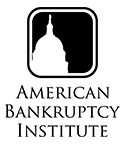Because there can be at least a two-year lag between a bankruptcy filing and a preference demand made pursuant to 11 U.S.C. §547, a consistent, proactive approach to gathering defense data is critical.
Unsecured Trade Creditors Committee
Committees
In bankruptcy cases, general unsecured claims can be found near the back of the line and are often paid pennies on the dollar.
Although a claim involving only goods sold to the debtor qualifies as an administrative expense under § 503(b)(9)[1] of the Bankruptcy Code, courts are split as to whether, and to what extent, this section covers so-called “hybrid” claims—those involving both goods and services transactions.
If your company is a member of the official committee of unsecured creditors (committee) and the bankruptcy your company is involved with is nearing the time of the confirmation of a liquidation plan, this article may be of interest to you. By now, you have gotten some idea of where the bankruptcy is heading.
In the wake of the global credit crisis, the U.S. housing market plummeted with values declining as much as 50 percent and home foreclosures at record highs. With lower asset values and frozen credit markets, it became difficult, if not impossible, for U.S. homebuilders to continue business operations. Many U.S.
The most accessible defense to a preference claim is the “new value” defense codified at 11 U.S.C. §547(c)(4). If the requirements of §547(c)(4) are met, this defense enables a creditor to avoid preference liability where it has already received a preferential transfer by subsequently providing new value to the debtor.
Creditor committees use valuation reports in a variety of ways, and it is important for the lawyer or financial advisor to help the committee understand how to read and evaluate a valuation report.
An emerging strategy many hedge and private equity funds are pursuing is known as the “loan-to-own” investment. In this type of investment, a fund’s investors acquire debt and sometimes certain amounts of equity or management control, such as voting power or board seats, from a lender of a distressed company.
May a creditor’s claim be disallowed simply because he or she failed to provide supporting documentation in violation of Rule 3001 of the Federal Rules of Bankruptcy Procedure? The answer depends on which jurisdiction the creditor is pursuing its claim in, and courts are currently sharply divided on the issue.
Unsecured trade creditors in mid- to large-sized chapter 11 cases are frequently targets of distressed-debt traders looking to buy unsecured claims. These traders make their money in a variety of ways, principally on the assumption that the claims they buy today will be worth more later either in the distressed-trade market or upon plan distribution.
Co-Chair
Bernstein Shur
Portland, ME
(207) 228-7379
Co-Chair
KEWA Financial Inc.
Lexington, KY
(859) 233-0352
Communications Manager
Davis Wright Tremaine LLP
Seattle, WA
(206) 622-3150
Education Director
Lowenstein Sandler LLP
New York, NY
(646) 414-6886
Newsletter Editor
Cleary Gottlieb
New York, NY
(212) 225-3341
Newsletter Editor
Frost Brown Todd LLP
Cincinnati, OH
(513) 651-6842
Special Projects Leader
B. Riley Advisory Services
Los Angeles, CA
(213) 409-6237






![Photo of David B. Wheeler [1]](https://abi-org-corp.s3.amazonaws.com/committee/Authors/David-Wheeler.jpg)










